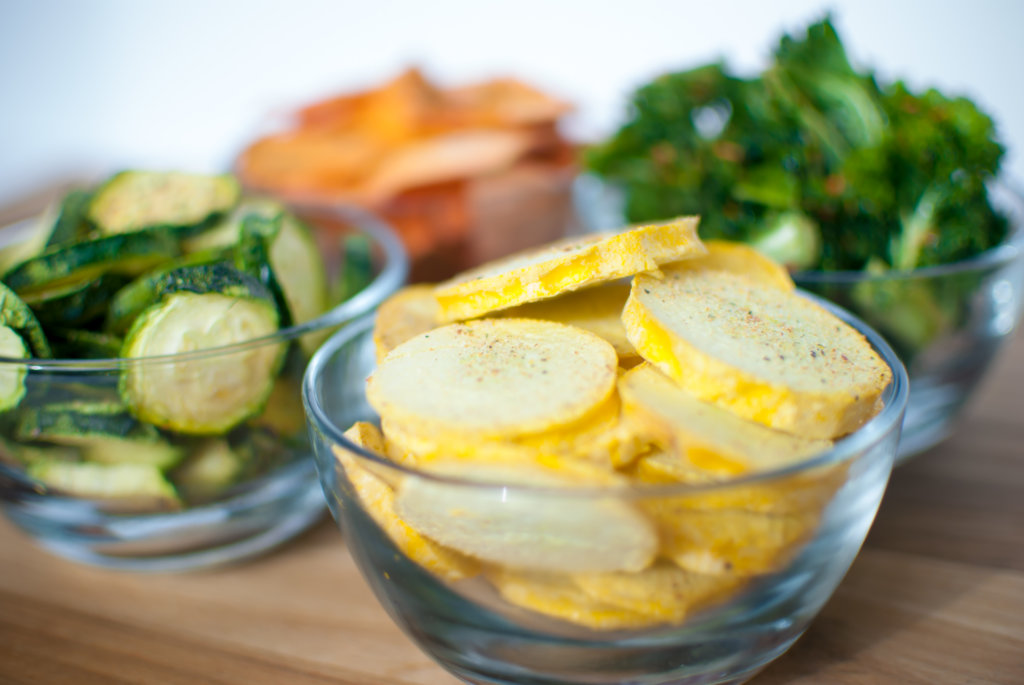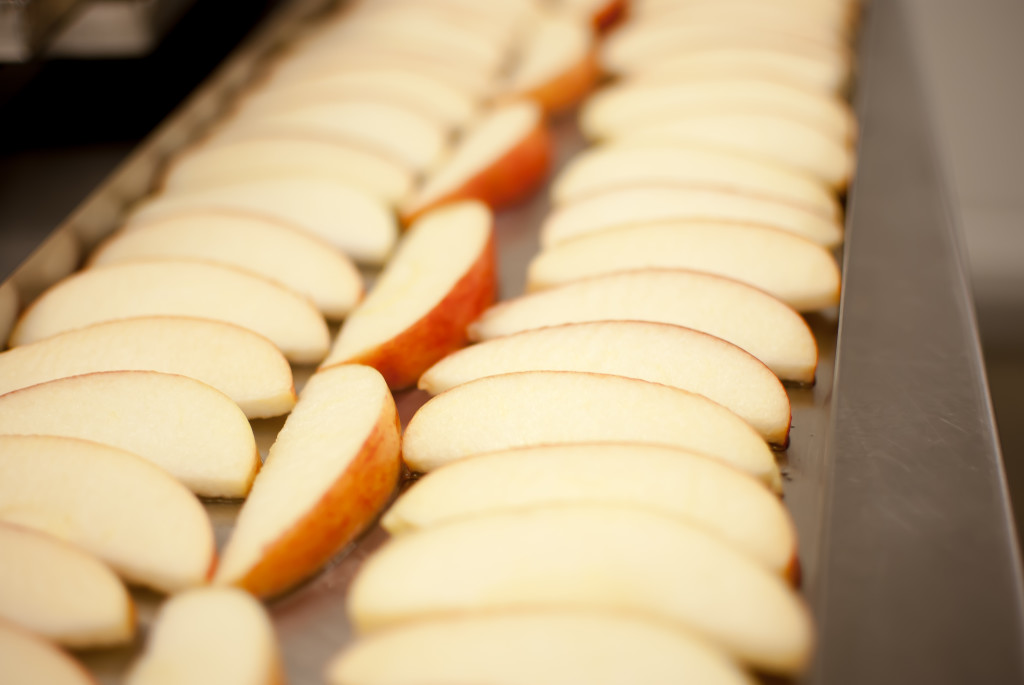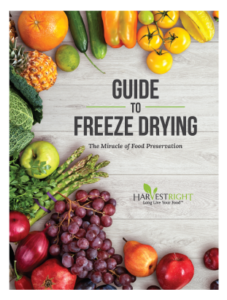
There are dozens of varieties of squash and this is the season they start showing up in colorful pyramids in markets and farmer’s markets. You may even have them trailing all over your own garden. Squash are so nutritious. The colorful skins contain beta-carotene and other nutrients and trace minerals. They’re also incredibly versatile. Sweet tasting squash such as butternut and acorn make creamy soups, yellow squash go nicely in omelets, soups and stews, and pumpkin (it’s a squash!) is a lovely addition to quick breads.
- Crunchy Veggie Chips: All varieties of squash (except spaghetti squash) make healthy, nutritious, satisfyingly crunchy vegetable chips when sliced thin and freeze dried.Veggie chips are the smart alternative to potato chips, with all the crunch and none of the guilt.
- Vegged Up Stews and Breakfasts: You can cube and freeze dry yellow squash for use in chili, stews and egg scrambles or omelets. Yellow squash has such a mild taste that you won’t taste it. It’s a good way to sneak an extra serving of vegetables into your meals. Don’t worry about redyrating before adding it to chilies or stews, it will return to it’s original consistency on it’s own in the pot.
- Creamy Soups: Peel your acorn, butternut or pumpkin squash and puree the flesh with a little water or broth. Use only enough liquid to keep the blade spinning. Spread the pureed squash, now a jam-like consistency, onto the freeze drying trays and process. Grind the freeze dried chunks into a powder and store in an airtight container. When you’re ready for soup, add enough hot vegetable broth to make a thick soup. To enhance flavor of squash soups, repeat the freeze drying process with sweet apples such as the Fuji variety. Slowly add “apple powder” to the soup to taste (the ratio is usually one apple per two squash). Include sauteed onions and sea salt and top with freeze dried banana chips.

Squash are one of our favorite things to freeze dry and experiment with. They’re so versatile and nutritious, and so easily grown, that we’re always finding new ways to use freeze dried squash. Do you have a favorite? Share it with our community on our Facebook page!





Yeah! I can’t wait to freeze dry my summer squash that is taking over my garden! I don’t have to waste any food! I’ll let you know how it turns out!
Does the squash need to be cooked first?
You can do either, I’ve done zoodles, grated, chips, lasagna “noodles:” – all raw (zucchini specifically).
What am I doing wrong? After freeze drying and storage, my squash is getting spongy. I have put them away using different methods, in mylar bags and in mason jars. Both are doing the same thing. And it’s not just one batch, It’s all that I have dried. I have only had the machine for about a month, so this is all new to me and I’m just starting out.
Sometimes squash can seem totally dry but there is a tiny bit of moisture left in the center. This is especially true if you are freeze drying thicker pieces. The key is to add some extra dry time if you aren’t sure that the product is totally dry. The beauty of freeze drying is that you can’t over dry something because it is a gentle process.
Did you weigh after the cycle was finished and restart machine adding 2 hours to make sure they weigh the same?
Do you have to de-seed the squash before freeze drying, or can you leave the seeds in when you thin-slice it?
Also, can seeds be freeze dried separately, and if so, before or after roasting?
Seeds are amazingly engineered to preserve the contents, which usually includes moisture. When I am freeze drying summer squash to make flour I include everything (seeds, skin, flesh) and dry it another 12 hours or so after White Walker (our freeze dryer) says it’s done, to be sure I penetrate the relatively soft seeds. Then everything goes into the blender for flour. I would be hesitant to try this with anything with sturdier seeds, like winter squash/pumpkin or even watermelon.
I freeze dried bananas and butternut squash together. The process was complete in the middle of the night so I put the trays on my counter with HR plastic covers on the trays until morning when I could put them up. They all seemed dry and crunchy at the time of getting them out of the machine. The bananas were/are AMAZING! But the butternut got spongy by morning. Can I just put them back in for another cycle or do I have to worry about spores/contamination since they were on my counter top overnight?
You can put them in for a little extra dry time and they will turn out great!
Will summer squash stay as crispy after being stored as when it comes out of the freeze dryer?
Wouldn’t it be possible to freeze dry butternut squash in cubes and then grind them to powder rather than making it a paste first?